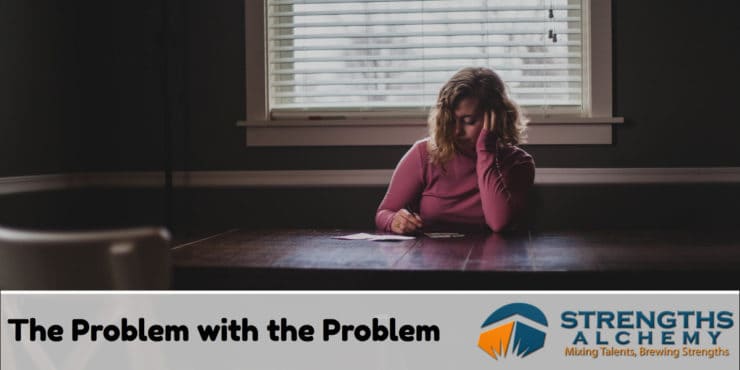
One of the first steps I take in coaching is to help people identify their goals. Some clients start off by stating what they want to achieve, some start off with a problem they want to avoid or get rid of. Regardless of their starting point, we always end up redefining both the problem and goals before we work on them, which always leads to much greater clarity on both issues.
A similar scenario came up when I was getting my WIAL (World Institute for Action Learning) Action Learning Coach certification. The first step, after setting the ground rules, is for the problem presenter to share his/her problem, and for the whole team to get consensus on the problem’s definition. After several rounds of questions and answers, without fail, the problem statement will always change.
The Problem with the Problem
Based on the numerous conversations I’ve had, the problem with the problem is this: We are often unaware of what the REAL issue is.
This short paragraph from the book “Optimizing the Power of Action Learning” can give us some insight into why.
“Many of us often unintentionally filter our presentation with biases and preconceptions such as
- Anchoring and adjustment. What we choose to present does not come out of the air. It is usually built upon our values and basic assumptions, which determine what we believe is important in the problem and colour how we present it.
- Representativeness. We tend to assess the likelihood of the cause or the solution to the problem as matching a pre-existing category.
- Recent and past occurrences. We tend to assume that what has happened in the past will occur again and soon in the future relative to our problem.
- Preconceptions. We tend to have expectations about the problem and possible solutions that may have little to do with reality.”
With so many filters colouring our view of our own problems, it is no wonder that we often end up identifying only the surface issues – or the symptoms – instead of the root issue. It is thus even more important that we spend more time identifying the root issue as opposed to identifying solutions to surface issues. All too often, our attention is skewd with the wrong focus, and we may end up climbing to the top of the ladder only to realize that it was leaning against the wrong wall.
“If I had an hour to solve a problem I’d spend 55 minutes thinking about the problem and 5 minutes thinking about solutions.”
― Albert Einstein
The Most Common Shift in Problem Perspectives
“The issue isn’t my family member, but my inability to accept or deal with certain behaviours of this person.”
“The issue isn’t that my team member isn’t performing, it’s my unwillingness to confront issues with this person because this person is close to me.”
“The issue isn’t that my friend is treating me badly, it’s my insecurity that causes me to react negatively to certain comments.”
And the list goes on. One of the most common shifts is the recognition that the root issue lies not outside, but within ourselves. That’s great news! Because when we start to recognize the part we play in the problem, we begin to have more control over the situation.
“All conflict we experience in the world, is a conflict within our own selves.”
– Brenda Shoshanna
How Do We Identify the Root Issue of Our Problems?
Perhaps the first thing we can do is to assume that our initial perception of the issue is usually incorrect. We tend to see only the symptoms rather than the actual root issue.
Next, we can seek the counsel of others and always be open to new perspectives. This is something that is automatically built into the Action Learning Process due to the first ground rules and its 6 components (Read more about what Action Learning here). If you are part of an action learning team, I recommend that you take full advantage of your team. If you are not, I recommend that you consult a group of trusted advisers and ask them for help in defining the root issue together.
Action Learning Teams usually exists within organisations, and public ones are rare. If you would like to be part of an action learning team, reply to this newsletter highlighting your interest. If there’s enough demand, I may start one action learning team just for you!
”Without consultation, plans are frustrated, But with many counsellors they succeed.”
- Proverbs 15:22
What problems are you facing now? You may want to enlist the help of trained coaches, therapists or counsellors to help you work through them to get to the root of the problem. If you would like to find out more about coaching, you can read up more about its benefits here or schedule a free introductory coaching session now.
Additional Reading / References:
